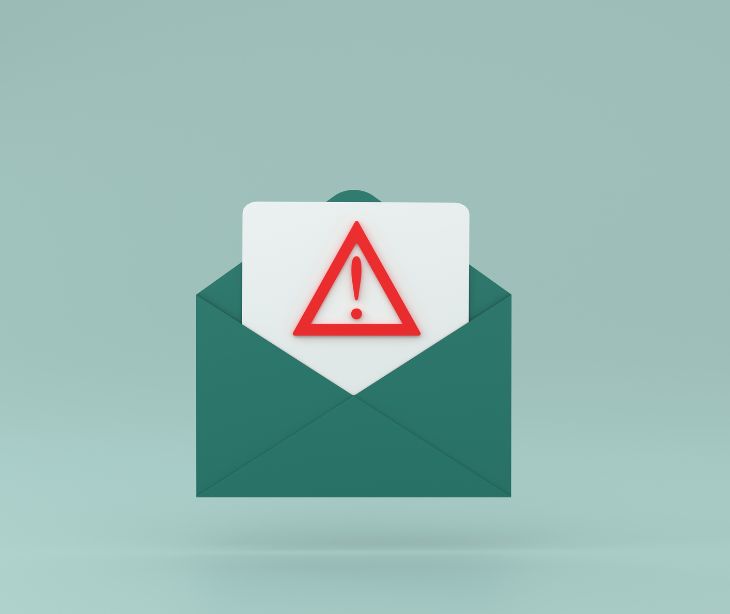2 min read
How to verify email attachments containing PHI are virus-free
Liyanda Tembani
August 16, 2024

Verifying email attachments containing PHI for viruses before opening them safeguards patient data privacy and security. Failure to do so could result in severe data breaches, compromising patients' personal and medical information, and potentially leading to identity theft and privacy violations.
HIPAA requirements for email security
HIPAA sets the standards for safeguarding the privacy and security of protected health information (PHI). The HHS states that "The Privacy Rule allows covered health care providers to communicate electronically, such as through e-mail, with their patients, provided they apply reasonable safeguards when doing so.". Healthcare providers and their business associates must take measures to guarantee the confidentiality of this data. Ensuring the security of email attachments containing PHI helps achieve and maintain HIPAA compliance.
Steps for verifying email attachments containing PHI
1. Implement robust email filtering and scanning
Email security begins with robust email filtering and scanning solutions. These solutions act as gatekeepers, analyzing incoming emails and attachments for viruses, malware, and other threats. Suspicious emails are blocked before reaching the intended recipients, reducing the risk of exposure to malicious content.
2. Use advanced threat detection techniques
Healthcare organizations must employ advanced threat detection techniques. Machine learning and behavioral analysis can identify and block emerging threats that traditional signature-based approaches might miss. Real-time threat detection is essential for staying one step ahead of cyber adversaries.
3. Leverage attachment sandboxing
Attachment sandboxing involves isolating and analyzing email attachments in a controlled environment. This sandboxing process allows organizations to scrutinize the behavior of attachments without risking the security of their network.
4. Implement content inspection and DLP
Content inspection and data loss prevention (DLP) tools help prevent accidental data leaks and ensure compliance with privacy regulations. These tools scan the content of email attachments, identifying and classifying sensitive PHI. Administrators can configure DLP policies to prevent unauthorized sharing or transmission of this information, enhancing data security.
5. Enable encryption for email communication
Email encryption ensures that even if an unauthorized party gains access to an email server, the contents of an email remain secure and confidential. Healthcare organizations should employ robust encryption techniques and use HIPAA compliant email providers to safeguard sensitive data in messages and attachments.
6. Strengthen authentication and access controls
Secure authentication mechanisms, such as multi-factor authentication (MFA), bolster the login process. Access controls limit access to these accounts to only those with a legitimate need, reducing the risk of unauthorized data access or theft.
7. Stay updated with security measures
Healthcare organizations must stay current with security measures to protect against cyber threats. That includes regularly updating software, security patches, and threat definitions. Periodic security audits and assessments help identify vulnerabilities and ensure compliance with security best practices.
8. Develop an incident response plan
While robust security measures significantly reduce the risk of incidents, no system is entirely immune to threats. Therefore, healthcare organizations must develop and maintain an incident response plan. This plan outlines the steps to follow when a security incident or data breach occurs. A well-executed incident response plan can minimize damage, protect patient data, and mitigate legal and financial consequences.
Related: HSCC Cybersecurity Working Group releases new incident response template
FAQs
How does HIPAA define a "reasonable safeguard" for email communication?
A "reasonable safeguard" includes measures like encryption, strong passwords, and ensuring that only authorized individuals have access to email accounts containing PHI. These safeguards protect patient data during email communication.
Can healthcare providers use cloud-based email services for PHI?
Healthcare providers can use cloud-based email services for PHI as long as the service is HIPAA compliant, provides encryption, and signs a business associate agreement (BAA) with the provider.
Are there penalties for not securing email attachments containing PHI?
Failing to secure email attachments containing PHI can result in significant penalties, including fines and legal actions, for violating HIPAA regulations. These penalties underscore the importance of proper email security practices.
Subscribe to Paubox Weekly
Every Friday we'll bring you the most important news from Paubox. Our aim is to make you smarter, faster.




